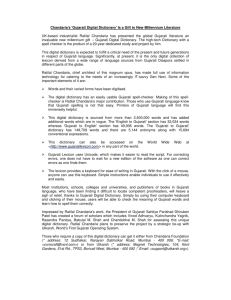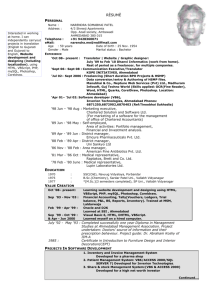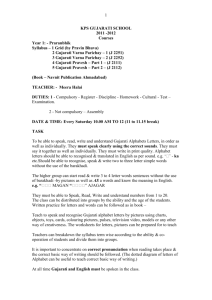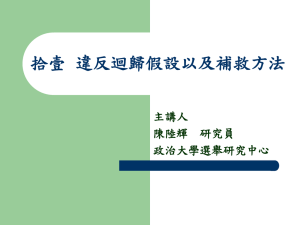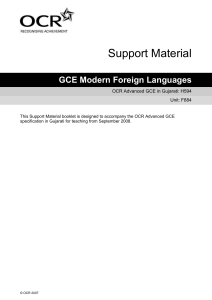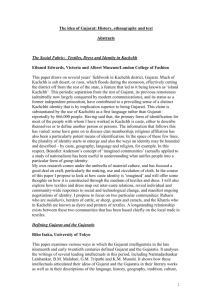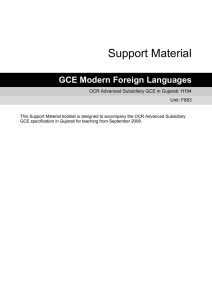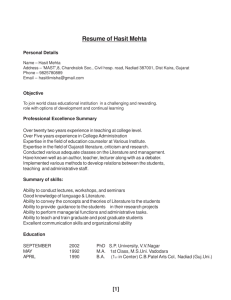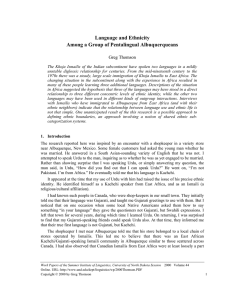103 Tell us about our costumes 1137KB May 28 2015 11:11:00
advertisement
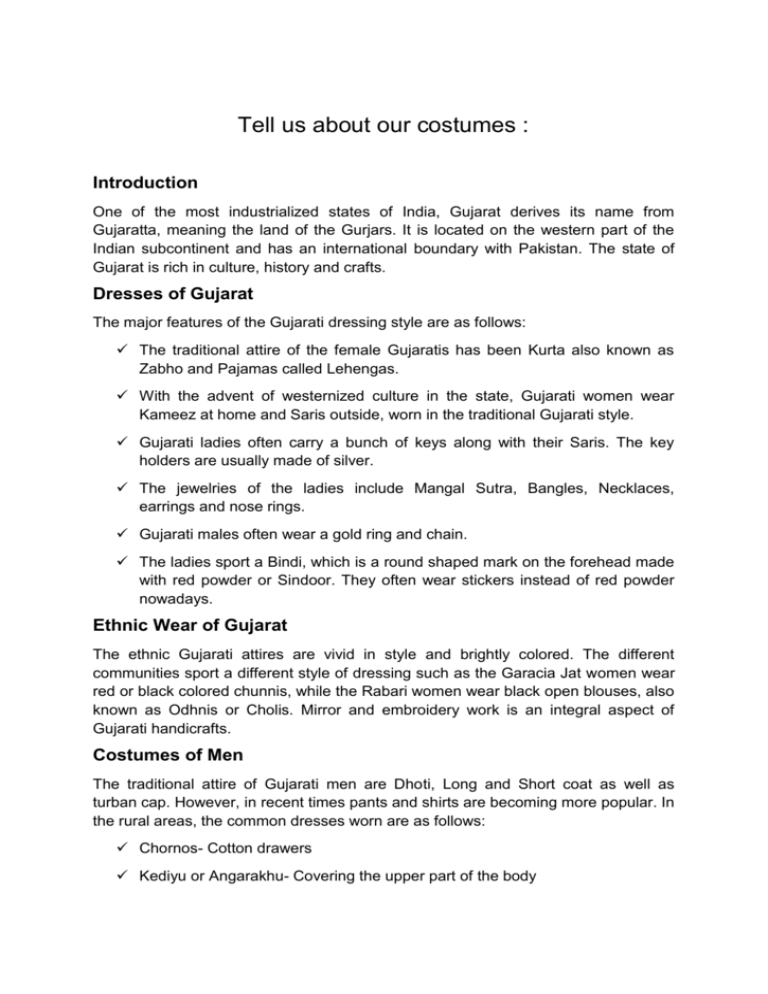
Tell us about our costumes : Introduction One of the most industrialized states of India, Gujarat derives its name from Gujaratta, meaning the land of the Gurjars. It is located on the western part of the Indian subcontinent and has an international boundary with Pakistan. The state of Gujarat is rich in culture, history and crafts. Dresses of Gujarat The major features of the Gujarati dressing style are as follows: The traditional attire of the female Gujaratis has been Kurta also known as Zabho and Pajamas called Lehengas. With the advent of westernized culture in the state, Gujarati women wear Kameez at home and Saris outside, worn in the traditional Gujarati style. Gujarati ladies often carry a bunch of keys along with their Saris. The key holders are usually made of silver. The jewelries of the ladies include Mangal Sutra, Bangles, Necklaces, earrings and nose rings. Gujarati males often wear a gold ring and chain. The ladies sport a Bindi, which is a round shaped mark on the forehead made with red powder or Sindoor. They often wear stickers instead of red powder nowadays. Ethnic Wear of Gujarat The ethnic Gujarati attires are vivid in style and brightly colored. The different communities sport a different style of dressing such as the Garacia Jat women wear red or black colored chunnis, while the Rabari women wear black open blouses, also known as Odhnis or Cholis. Mirror and embroidery work is an integral aspect of Gujarati handicrafts. Costumes of Men The traditional attire of Gujarati men are Dhoti, Long and Short coat as well as turban cap. However, in recent times pants and shirts are becoming more popular. In the rural areas, the common dresses worn are as follows: Chornos- Cotton drawers Kediyu or Angarakhu- Covering the upper part of the body Phento- A type of turban Dhoti- Waistcloth Kafani or Peharan- Shirt Costume of Women The traditional attire of Gujarati women is Lehenga Choli or Ghagra Choli, which is supplemented by Odhni or Dupatta. The main attire of the village women are as follows: Chaniyo- Colored petticoat embellished with abhala or glass pieces Choli or Polku- Embroidered blouse Odhani- A piece of coarse cloth, which is used for covering the head ABHAS - Traditional Costume Of Kutch Region The Kutch region of Gujarat is especially popular for the Abha or Kanjari. Abha is essentially the typical choli worn by the Gujarati village women folk. Kanjari is a long beautifully embroidered blouse, with mirror work embellished upon it. The men of the Kutch region wear loose trousers, short coat, long sleeved under-jackets and plain silk clothes. The Abha dressing style has been popularized in the mainstream population by the likes of Anjali Mangaldas. Ras And Garba Costumes The Ras dance is performed to reenact or perform the Ras Leela or the divine trance dance by Lord Krishna, performed by him at Gokul and Vrindavan. The costumes worn by the folks on this occasion are as follows: Keviya- A small coat with tight sleeves, pleated frills and embroidered borders Kamarbandha- Colored Waistbands Churidars- Tight trousers Textiles Of Gujarat Patola The Silk Patola craft, originated in the 7th Century A.D, in the southern region of India. Later Kumarpal, the Solanki ruler, brought 700 weavers to Patan and let them settle on the banks of River Saraswati. Under the patronage of Kumarpal, the Patola craft reached its zenith. Patan and Baroda are still the major hubs of this craft. Patola involves a double-ikat technique, which usually takes a period of 5-6 months. Immense coordination and visualization skills are deployed to achieve the finesse. Floral, geometrical and figurative patterns are used to make Patola products. At a certain period of time, the products were exclusively exported to Indonesia, where it was believed to possess healing properties and bring welfare to the clan. It was also kept as a prized possession by the admiring royalty. Bandhej Bandhej or Bandhani style is very popular throughout India. The Khatri community of the Kutch region specializes in the craft for many generations. The craft is also practiced in the Jamnagar and Surendranagar districts of the state. Bandhani employs the tie and dye method, wherein the cloth material is tied at a few places and immersed in different colored dyes to get patches or designs, resembling mirror images. Various themes and patterns are also incorporated into the design scheme of the Saris. Embroidery Embroidery was once the side occupation of the wives of nomads, herdsmen and agriculturists. The craft is extremely popular among the different communities of the region. The Ahir, Jats, Mukka, Mutwa and Sodha Rajputs are engaged in this craft. The most popular embroidery styles are Rabari, Bavalia and Banni. Embroidery using Gold Zari is also very popular across Gujarat. In this type of embroidery, intricate designs are achieved using gold and silver threads. Jewelry Broach was a very important center for precious metals, stones and jewelry trade for India. Owing to this, many carvers, artisans, stone cutters settled in and around these trading hubs. Thus, jewelry making hubs are spread across the state of Gujarat. Almost 80-90% of the diamonds of the world are cut in the cities of Surat, Bhavnagar, Ahmedabad and Navasari. The main jewelries worn by the Gujarati women are bangles, earrings, Mangal Sutras, necklaces and rings. The age-old and popular tribal jewelry craft of Pachchikam is slowly and steadily gaining popularity. Mundra, Anjar, Bhuj, Porbandar, Surendranagar, Jamnagar and Ahmedabad are the main centers of silver jewelry making.
